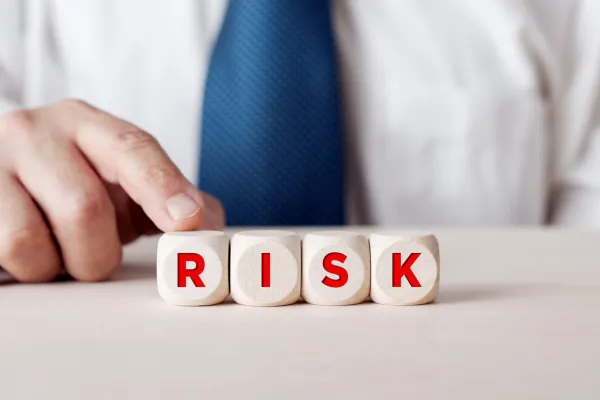Blog & News

Security Risk Assessment: A Comprehensive Guide to Safeguarding Your Organization
Security Risk Assessment: A Comprehensive Guide to Safeguarding Your Organization
A security risk assessment is the first and most critical step in protecting your people, property, and operations. By systematically identifying assets, threats, vulnerabilities, and impacts, you gain the actionable insights needed to allocate resources effectively and mitigate risks before they become costly incidents. At Steel Bison Security, we partner with businesses across industries to design and implement tailored risk assessment programs.
1. What Is a Security Risk Assessment?
A security risk assessment is a structured process to:
Identify Assets: Catalog people, facilities, equipment, data, and reputation.
Identify Threats: Determine potential sources of harm—natural disasters, criminal activity, insider threats, or cyber-physical attacks.
Analyze Vulnerabilities: Find weaknesses in physical infrastructure, operations, or policies.
Evaluate Impacts: Assess potential consequences in terms of financial loss, safety, compliance, or reputation.
Prioritize Risks: Rank risks based on likelihood and severity to guide mitigation efforts.
Unlike a one-off checklist, a formal risk assessment yields a prioritized roadmap for targeted security investments.
2. Why Risk Assessments Matter
2.1. Proactive Risk Management
Rather than scrambling to respond to incidents, organizations that perform regular assessments anticipate and prevent disruptions—minimizing downtime and financial loss.
2.2. Regulatory and Insurance Compliance
Regulators—from OSHA for workplace safety to ISO standards for information security—often require documented risk assessments. Insurers typically offer lower premiums to businesses that demonstrate a robust risk-management program.
2.3. Resource Optimization
Budgets are finite. By focusing on the highest-priority risks, you deploy personnel, technology, and capital where they’ll have the greatest impact—avoiding waste on low-risk areas.
2.4. Stakeholder Confidence
Employees, investors, clients, and partners gain confidence in a company that systematically safeguards its assets and people. This trust translates to stronger relationships and competitive advantage.
3. Core Components of a Risk Assessment
A comprehensive assessment includes five primary elements:
Asset Inventory
People (employees, customers, visitors)
Physical assets (buildings, machinery, inventory)
Information assets (databases, intellectual property)
Reputation and brand value
Threat Identification
Natural (floods, earthquakes)
Human (theft, vandalism, workplace violence)
Technical (system failures, cyber-physical breaches)
Vulnerability Analysis
Physical gaps (unlocked doors, blind spots)
Procedural weaknesses (inadequate training, lack of SOPs)
Technological flaws (outdated firmware, unpatched software)
Impact Assessment
Financial (asset value, downtime costs)
Safety (potential for injury or loss of life)
Regulatory (fines, legal action)
Reputational (customer trust, brand value)
Risk Prioritization
Likelihood × Impact = Risk Score
Heat maps to visualize high-risk zones
Action plans for mitigation
4. Proven Frameworks and Methodologies
4.1. NIST SP 800-30
The National Institute of Standards and Technology’s guide provides a well-established process for IT and physical risk assessments. Learn more: NIST SP 800-30 Rev. 1.
4.2. ISO 31000
This international standard offers principles and guidelines for effective risk management across any sector. More details at ISO 31000:2018.
4.3. COSO ERM Framework
The Committee of Sponsoring Organizations of the Treadway Commission provides a broad enterprise-risk-management model that integrates strategic, financial, and operational risks.
4.4. CARVER Method
Originally military-focused (Criticality, Accessibility, Recuperability, Vulnerability, Effect, Recognizability), CARVER helps prioritize facilities or assets by strategic importance.
Often, the best approach is a hybrid—adapting elements of multiple frameworks to your organization’s size, industry, and regulatory environment.
5. Step-by-Step Risk Assessment Process
5.1. Assemble a Cross-Functional Team
Include representatives from Security, IT, Facilities, HR, Legal, and Operations to capture diverse insights.
5.2. Define Scope and Objectives
Clarify which sites, processes, or systems are in scope and what you aim to achieve (e.g., reduce petty theft by 50%, ensure compliance with local building codes).
5.3. Conduct Asset Inventories and Site Surveys
Walk the premises to verify inventory lists, inspect physical controls, and interview frontline personnel about known issues.
5.4. Gather Data and Perform Threat Analysis
Review incident logs, insurance claims, local crime statistics, and threat-intelligence feeds to identify potential hazards.
5.5. Analyze Vulnerabilities
Use checklists and questionnaires to systematically evaluate physical, procedural, and technical weaknesses.
5.6. Evaluate Impacts and Likelihood
Assign scores (e.g., 1–5 scale) for impact and likelihood, document assumptions, and calculate risk scores.
5.7. Prioritize and Develop Mitigation Plans
Create SMART (Specific, Measurable, Achievable, Relevant, Time-bound) action items for high-risk areas—such as installing access-control readers, conducting staff training, or upgrading camera systems.
5.8. Document Findings in a Risk Assessment Report
Include executive summary, methodology, risk heat maps, mitigation recommendations, timelines, and responsible parties.
5.9. Review with Stakeholders and Secure Buy-In
Present findings to leadership, budget owners, and relevant departments to obtain resources and commitment.
5.10. Monitor, Review, and Update
Reassess at least annually—or after major changes (expansions, new threats, incidents)—to keep your program current.
6. Tools and Technologies to Enhance Assessments
Risk Management Software: Platforms like LogicManager, Resolver, or RiskWatch automate scoring, reporting, and tracking.
GIS & Mapping Tools: Visualize asset locations, threat zones, and incident hotspots.
IoT Sensors: Environmental monitors (temperature, humidity, smoke) and door-position sensors feed live data into dashboards.
Mobile Inspection Apps: Field personnel log findings with photos and GPS stamping directly to central databases.
Video Analytics: AI-driven analytics detect unusual behavior and feed alerts into PSIM platforms.
Using these tools accelerates assessments, improves accuracy, and enables real-time monitoring of mitigation progress.
7. Common Pitfalls and How to Avoid Them
Overly Broad Scope
Pitfall: Trying to assess every risk at once.
Solution: Phased approach—start with critical sites/processes, then expand.
Lack of Stakeholder Engagement
Pitfall: Operating in a silo, losing buy-in.
Solution: Regular workshops and status updates to maintain transparency.
Data Overload
Pitfall: Collecting too much raw data without clear analysis.
Solution: Focus on actionable metrics and high-risk scores.
Failure to Update
Pitfall: Static reports that go stale.
Solution: Schedule formal reviews and post-incident updates.
Ignoring Human Factors
Pitfall: Over-reliance on technology; neglecting employee training.
Solution: Combine technical controls with robust policies, SOPs, and awareness programs.
8. Case Study: Risk Assessment in Action
Scenario: A regional distribution center faced recurring after-hours break-ins and suspected insider theft.
Process:
Team Formation: Security, Operations, HR, and IT representatives convened.
Site Survey: Identified unlit loading docks, unmonitored back gates, and shared network credentials.
Threat Analysis: FBI data confirmed a 15% year-over-year increase in warehouse burglaries locally.
Vulnerability Scan: Found gaps in video coverage and lax badge-access policies.
Risk Scoring: Back gate access was High-Likelihood/High-Impact; insider theft Medium/High.
Mitigations:
Installed biometric readers at back gates.
Added infrared PTZ cameras on loading docks.
Implemented two-factor authentication for network access.
Rolled out mandatory security awareness training.
Results: Within six months, after-hours losses dropped by 80%, and insider theft incidents ceased.
This structured approach delivered rapid ROI and strengthened overall security posture.
9. Integrating Risk Assessment into Your Security Program
A one-time assessment isn’t enough—embed risk assessment into your security lifecycle:
Annual Planning: Align assessments with budget cycles and strategic reviews.
Incident Response: Trigger mini-assessments after significant security events.
New Projects: Perform assessments before facility expansions, new technology rollouts, or major policy changes.
Continuous Monitoring: Leverage IoT sensors, CCTV analytics, and mobile apps to feed data back into your risk register.
This iterative model transforms risk assessment from a project into a living program.
10. How Steel Bison Security Can Help
At Steel Bison Security, our experts bring decades of experience to your risk assessment:
Customized Methodologies: We adapt NIST, ISO, and CARVER frameworks to your industry and scale.
Hands-On Site Surveys: Our specialists conduct thorough walkthroughs, stakeholder interviews, and data reviews.
Technology Integration: We recommend and implement the right blend of software, sensors, and analytics tools.
Actionable Reporting: You receive a clear, prioritized roadmap—complete with timelines, budget estimates, and assignment of responsibilities.
Ongoing Support: From annual reassessments to post-incident analyses, we keep your program current and effective.
Learn more on our services page or schedule a consultation through our contact page.
11. Conclusion
A comprehensive security risk assessment is the keystone of any effective security strategy. By identifying your most critical assets, understanding the threat landscape, analyzing vulnerabilities, and prioritizing risks, you gain a clear path to mitigation that protects your operations, reputation, and bottom line. Integrating assessments into a continuous, data-driven security program ensures you stay ahead of evolving threats.
Don’t leave your organization’s safety to chance—partner with Steel Bison Security to develop and maintain a robust risk assessment program that delivers real-world results and peace of mind.
Start your journey toward a safer future today. Contact Steel Bison Security for expert security risk assessment services.

EMAIL ADDRESS
OFFICE NUMBER
OFFICE ADRESS
(WA) 11900 NE First St STE 3066, Bellevue, Wa 98005
(WY) 30 N. Gould St STE R, Sheridan, Wy 82801
Copyright 2024 Steel Bison Security Services
